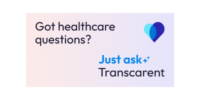Andreessen Horowitz October 15, 2024
Your access to life-saving medications shouldn’t depend on your zip code. Yet, for millions of Americans, especially in rural areas or lower-income communities, that is the reality.
Despite pharmaceutical spending in the US reaching over $700 billion each year, wide disparities in access to medications persist. The resulting inequities are particularly acute for rural communities and lower-income families, as well as for certain stigmatized populations such as those living with HIV or Hepatitis C (HCV).
Further, the clinics intended to serve these very groups, such as Federally Qualified Health Centers (FQHCs), Ryan White Clinics, and Sexually Transmitted Disease Clinics, often struggle to stay afloat financially. In particular, they lack the capabilities and capital needed to build and manage their own...







